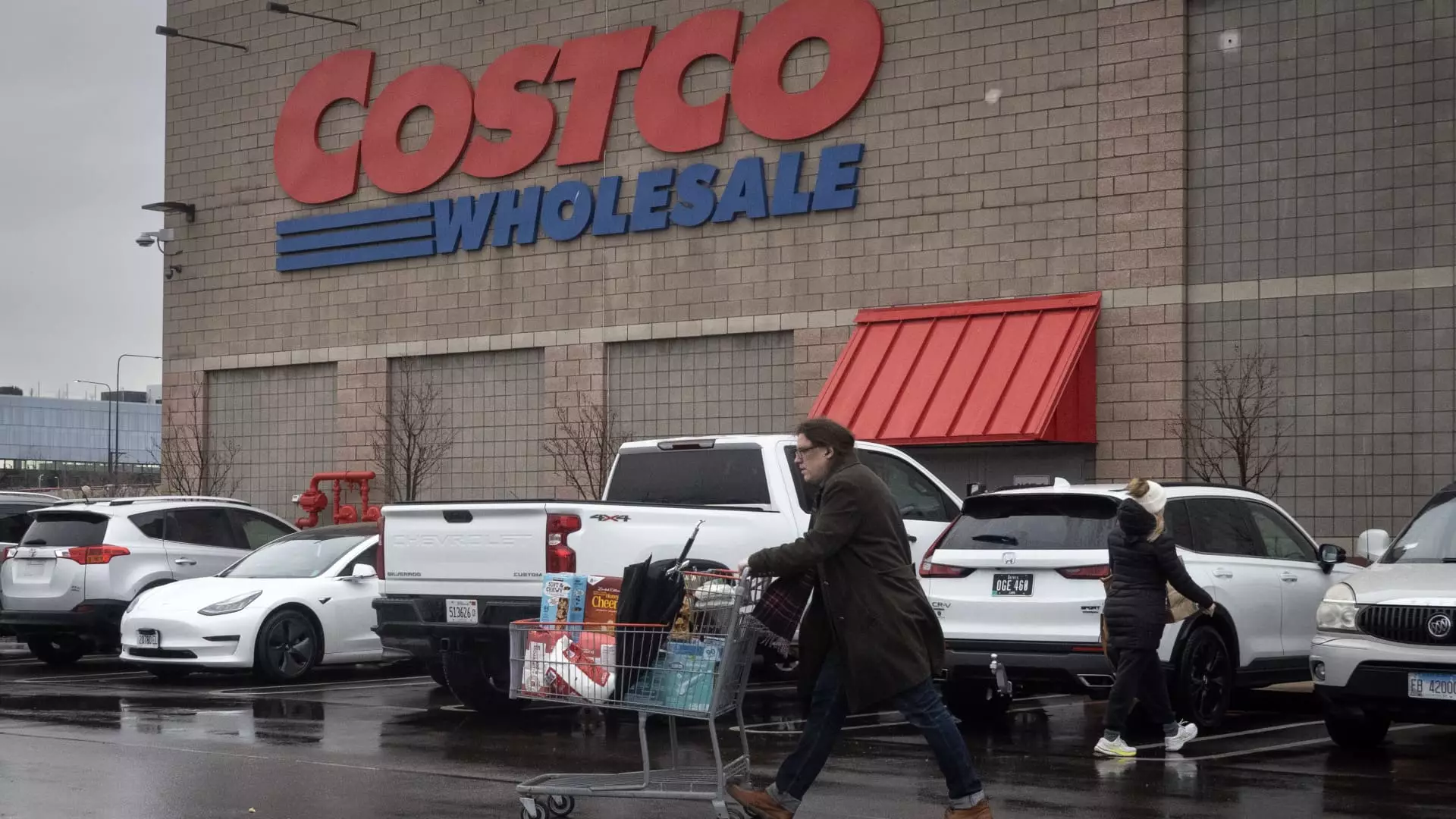Costco recently reported its earnings for the second quarter, revealing a mixed bag that left analysts divided. Although the wholesale giant missed its earnings per share (EPS) expectations, it outperformed on revenue. This situation presents a unique moment for investors—one that requires careful consideration and understanding of the broader economic landscape.
The Revenue Surge Amid Earnings Disappointment
Costco’s revenue climbed to $63.72 billion, a 9% increase from the previous year’s $58.44 billion, exceeding Wall Street expectations. Yet, the earnings per share of $4.02 fell short of the anticipated $4.11. This paradox raises questions about the resilience of Costco’s business model. While a revenue increase indicates a growing consumer base, the declining EPS suggests rising operational costs that are impacting profitability. For investors, this discrepancy could be a double-edged sword; although revenue growth is typically a positive signal, an earnings miss can sow seeds of doubt about management’s ability to navigate economic challenges effectively.
The Impact of Tariffs and Supply Chain Issues
One cannot ignore the backdrop of tariffs and supply chain disruptions as significant factors in Costco’s financial performance. CEO Ron Vachris acknowledged that more than a third of U.S. sales stem from imports, a considerable proportion of which are affected by the recent increases in tariffs imposed by the Trump administration. While Vachris remains optimistic about Costco’s capability to mitigate cost increases for members, the reality is that these operational challenges will likely prompt price hikes. Analysts at retailers like Target and Best Buy have already begun to forecast impending price increases as a direct consequence of these tariffs. This raises a crucial point for prospective investors: the ability of management to safeguard membership values for their consumers during turbulent economic times directly impacts Costco’s future profitability and brand reputation.
The Resilient Membership Model
Costco’s membership system has long been a cornerstone of its sustainable growth strategy, and the latest statistics highlight its relevance. With 78.4 million paid memberships and a renewal rate hovering around 90.5%, Costco demonstrates a loyal customer base that values quality and pricing. The revenue from membership fees alone reached $1.19 billion, indicating solid consumer trust despite potential price adjustments on individual items. This resilience speaks volumes about the company’s branding and its competitive edge in a crowded retail market. Even with economic headwinds, the membership model can buffer the business against fluctuations in individual product pricing, thereby maintaining overall sales momentum.
Consumer Spending Trends and Market Engagement
Another noteworthy aspect revealed by the earnings report is the evolving consumer behavior within the Costco ecosystem. With financial uncertainty looming on the economic horizon, shoppers are becoming ever more selective. The company reported a 6.8% increase in comparable sales, slightly edging out expectations while indicating a cautious consumer mindset. Growth in the e-commerce segment surged by 20.9%, suggesting that shoppers are increasingly seeking convenience even as they tighten their belts on discretionary spending. Products such as meat have seen significant sales growth, especially lower-cost protein options like ground beef. This consumer behavior points to a societal shift towards frugality—one that plays into Costco’s value-centric narrative.
The Competitive Landscape and Future Outlook
Looking forward, Costco will need to leverage its global supply chain and superior buying power to navigate the new realities shaped by tariffs and inflation. While immediate earnings may have taken a hit, long-term investors might view the current scenario as an opportunity. The company must innovate and adapt its product offerings to meet shifting consumer demands, emphasizing high-quality, value-driven selections that resonate with budget-conscious shoppers. If Costco can successfully pivot toward these new consumer preferences, it could solidify itself as a go-to destination even as economic conditions fluctuate.
As competitors grapple with similar challenges, Costco’s strong membership model and commitment to providing affordable prices may work to its advantage. The retail landscape is undoubtedly competitive, yet Costco’s track record attests to its resilience and ability to thrive even during economic downturns.
In sum, while Costco’s earnings miss raises valid concerns, the company’s overall growth trajectory, robust membership base, and adaptive strategies under challenging conditions underscore its enduring market strength. Investors should remain cautiously optimistic, recognizing that today’s economic challenges could potentially yield tomorrow’s opportunities.

